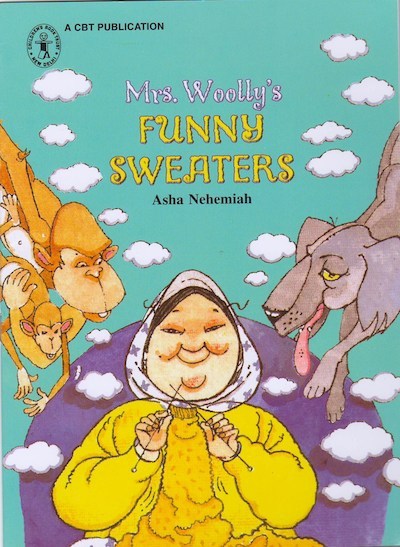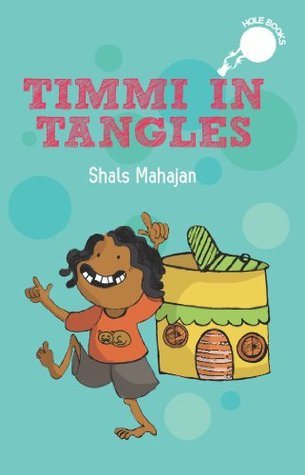 I have witnessed time and again, firsthand, the power of stories with my children. Navyaa is more observant, curious and empathetic of those around her because of the unique window that books give her into others' lives. While SULWE (Lupita Nyong'o) taught to love her dark skin color, MACHAR JHOL offered her a glimpse into the world a blind boy. Mahir at two, has been exposed to life in Africa through HANDA’S SURPRISE (Eileen Brown) and is already learning to be a feminist during our weekly revisits of (WOMEN TRAILBLAZERS). Stories are so powerful and this has been the leading driving force for this passion project. Over the last few weeks, I enjoyed sharing and reading some of my favourite books. I hosted two instagram live sessions with two incredible women. Click on the photo BELOW to be redirected to the instagram page :).  My first Instagram live was with Priyanka Bhansali: Priyanka Bhansali is an NY state certified Childhood Education and Special Education Teacher with a Master’s in Educational Development. She moved to Antwerp 8 years ago and taught English as a second language to adults and kids. She is a mom of two boys, ages 2 and 4 and an instagram blogger for toddler activities and games. Everyone knows that reading with your child helps with language acquisition, vocabulary expansion and brain development, but what else? Priyanka and I discussed some of the less obvious, more meaningful benefits of reading Priyanka is as passionate about children’s literature as I and as mothers, both of us had aligned visions about raising empathetic, kind and open-minded children ABOVE all else! We unpacked the importance of reading aloud at home and shared some of our favorite books and the impact that they have had on our children! I’d love for your thoughts on the live session. We spoke about reading routines and how we pick the books to read with our children. After this we broke down THE POWER OF STORIES into three different segments INTRODUCING NEW TOPICS because allow you talk about things so organically. CHALLENGES THEY FACE whether getting glasses or a new sibling. BEING INCLUSIVE MEMBERS OF SOCIETY a child can play their small part in a big world My second instagram live was with Samina Mishra: Samina Mishra is a documentary filmmaker, writer and teacher based in New Delhi, Her films use the lens of childhood, identity and education to reflect the experience of growing up in India, and include The Teacher and The World (2016) and Stories of Girlhood (2001). She has written children's books published by Duckbill, Scholastic, Tulika and Penguin. Her interest in the ways that the arts can be included in education led her to head programming at the Nehru Learning Centre for Children and Youth where she focussed on using the arts in a variety of ways with government school children. She is currently teaching the International Baccalaureate Film programme Noida and collaborating on Torchlight, a web journal on libraries and bookish love. This was one of the most special and memorable conversations and one that I can hear over and over again to hear Samina’s beautiful words of advice. Her work focuses on ‘seeing the world anew’ and being able to show the world in all its diversity. ‘We The Children of India’ is incredible on-going project that was started in 2019 particularly stemmed from the debate on what it means to be Indian. The project focuses on abstract ideas of identity and culture and uses the medium of poetry to allow children to understand their place in the world through everyday things they experience. She advises parents to encourage children to write poetry because it’s really not a high-art. She says that poetry is NOT only about rhyme, but actually about rhythm. More than anything it should be based on repetition and then the last line you break the rhythm. Children are introduced to songs and rhythm so organically. If you child does write a poem (in their mother tongue or in any language) let them send it in. She’s not trying to raise every child to be an artist, but at least be self-aware and more engaged with their place in the world. We spoke about the importance of sharing untold stories to our child for them to see themselves reflected in the world, as well as seeing other people’s stories. Below I am sharing some of her top film and book recommendations for young children (5+) Youtube - The Red Balloon (1956) by Albert Lamorisse Goopy Gyne Bagha Byne (1969) Satyajit Roy Children of Heaven (1997)- Majid Majidi My Neighbour Totoro (1988) Hayao Miyazaki The Fantastic Flying Books of Mr Morris Lessmore Books Recommendations: Indian publication has made huge strides in the last two decades, here are some of her recommendations! Anushka Ravishankar - captures place of play and real big ideas that all individuals grapple with MOIN AND THE MONSTER TODAY IS MY DAY Uma Krishmaswami- BOOK UNCLE AND ME (8+)- written entirely in worse Samina Mishra- MY FRIEND IN THE CITY Nandini Nayar - WHAT DID YOU SEE? Shals Mahajan - TIMMI IN TANGLES Thank you so much and stay tuned for the next series!
0 Comments
What a great few weeks its been. It was a lovely to take a deeper look at phonics and it brought me back to my past life as a teacher! We looked at early readers, ideas for the youngest readers on phonemic awareness, unpacked some of the basics of phonics with Ms Karishma Nichlani and stirred up ideas for DIY activities at home with Ms Karishma Mehta! There are 26 letters of the alphabet but they make 44 sounds. Phonics is a way of teaching children how to read and write. It helps children hear, identify and use different sounds that distinguish one word from another in the English language.Phonics involves matching the sounds of spoken English with individual letters or groups of letters. For example, the sound k can be spelled as c, k, ck or ch. Frequent opportunities for children to apply what they are learning about letters and sounds to the reading of words, sentences, and stories Most poor readers tend to rely so heavily on one reading strategy, such as the use of context and picture clues, that they exclude other strategies that might be more appropriate. To become skilled, fluent readers, children need to have a repertoire of strategies to draw on. These strategies include using a knowledge of sound-spelling relationships — in other words, an understanding of phonics. In addition, research has shown that skilled readers attend to almost every word in a sentence and process the letters that compose each of these words. Therefore, phonics instruction plays a key role in helping students comprehend text. It helps the student map sounds onto spellings, thus enabling them to decode words. Decoding words aids in the development of word recognition, which in turn increases reading fluency. Reading fluency improves reading comprehension because as students are no longer struggling with decoding words, they can concentrate on making meaning from the text. In addition, phonics instruction improves spelling ability because it emphasizes spelling patterns that become familiar from reading. Studies show that half of all English words can be spelled with phonics rules that relate to one letter to one sound. Pre-phonics Skills to develop at home: All books, rather, ANY book is great to read with your little one! There are some that I particularly find worthy of doing as pre-reading skills- I try to look for books with 3R’s- rhyme, rhythm and repetition. I have seen that having one or all of components in the stories you read helps your child pick up new words, sounds, phrases and sentence structure with ease. Ms Karishma Mehta also suggested some lovely activities to do at home : click here Early Readers - schools will often subscribe graduated reading programme Early readers – also referred to as first readers – are stepping stones from picture books and reading scheme books to longer chapter books. They're carefully developed to tell a great story, but in a format that children are able to read and enjoy by themselves, using familiar vocabulary and appealing illustrations. Devising an early reader isn’t an easy process, which is why publishing houses often work with best-selling children’s authors. . ‘An author can spend hours and hours on a sentence of just 10 words.’ There’s no precise science for developing an early reader, but publishers take into account children’s reading ability, vocabulary and use of grammar. Font type, size and layout are also important. ‘For example, for newly independent young readers, a page should finish at the end of a complete sentence, rather than the sentence continuing on the next page,’ @theschoolrun Gerald and Piggie Activities and guides included The Elephant and Piggie books are fun to read aloud to younger children who love the funny stories about the two friends. I recommend the books for ages 4-8 and especially beginning readers from 6-8 years old. Collins big cat whole-school reading programme that provides complete support for primary reading. Teaching resources to support developing and assessing key reading skills at all stages from early reading through to phonics, to guided, whole-class and independent reading for more confident readers. Rigby star Foundation Stage up to Grade 2 (3-7 year olds), multi-layered, rich fiction and non-fiction titles, learning guides and assessment trackers are also provided I can Read I Can Read! books are organized into color-coded levels. With hundreds of titles featuring award-winning authors and illustrators, and the most beloved character friends in the history of children’s literature, This level is just right for readers who are beginning to sound out words and sentences. Books on this level, like Danny and the Dinosaur, are written with simple sentences using familiar words. Many of the books at this level are filled with animal characters that have wonderful adventures! The vocabulary is just challenging enough to stay interesting. Children looking for favorite characters at this level will find the Berenstain Bears, Pinkalicious, and more. Oxford Reading Tree millions of children around the world learn to read with the guidance of this program. They have more than 800 books at their disposal. Orion Early Readers Over 4 million copies of the Orion Early Reader series have been sold. Packed with illustrations, they're stepping stones from picture books to reading books for children to read independently and come in two stages: Blue (to be read with an adult) and Red (a more advanced text for children to read alone when they're ready) Ladybird Read it Yourself a levelled reading book series (70 books, 4 levels). As well as classic fairy tales and adapsted Beatrix potter stories you can choose from modern stories and favourite characters (Charlie and Lola, Moshi Monsters) for your child. An app and eBook versions are also available. DC Super Friends Perfect for children who are beginning to recognise words and short sentences, DC Super Friends is a Random House colour first reader series based around superheroes like Batman and Superman. Here are the questions that Ms Karishma walked us through during the live IG!
What is phonics? At what age do children start learning phonics at schools, by and large? Can you explain phonics terminology? Digraph Blend Segmenting tricky words/ High frequency words, sight words Structure of phonics lesson What is the link between phonics and reading? How can we incorporate phonics in daily life as parents? Thanks so much and special shout-out to both the Karishma's! :) |
Categories
All
Archives
January 2024
Categories
All
|































 RSS Feed
RSS Feed